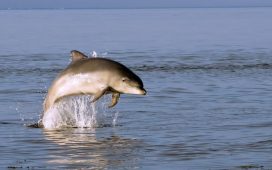A joint plan to save an endangered bird species from extinction is benefitting from an experimental tool – tiny solar-powered backpacks.
Plains wanderers are small, fawn-coloured, ground-dwelling birds with speckled throats that live in the semi-arid grasslands of north-western Victoria and the New South Wales Riverina.
The birds were once found across eastern Australia but their numbers have dramatically declined in the past 10 years. Much of their known habitat is found on private land.
Their habitat needs are very particular. During droughts, insect numbers drop off and nesting material and food are scarce, meaning the population can’t sustain itself.
Too much rain, however, can lead to an overgrowth of weeds and the birds leave. Researchers don’t know where they go – yet.
Recent estimates suggest there are between 500 and 1,000 plains wanderers left in the wild. The Australian government declared the plains wanderer critically endangered in 2015.
Now 15 birds have been released into Oolambeyan national park in the NSW Riverina region. It was protected in perpetuity in 2002 due to its high conservation value as critical habitat for the plains wanderer.
The release is part of a 10-year, $175m program involving the NSW, Victorian and South Australian governments in a collaborative effort to ensure the species’ survival.

It is the second release in NSW – the first saw 10 birds released near Hay in March. Sixteen were released in Victoria in 2021.
Researchers have long struggled to understand the movements of the birds in the wild – which is where the solar backpacks come in.
They have a two-year lifespan and will be tracked by satellite. Previously, tracking was limited by a 12-week battery life and the birds could only be followed with a transmitter in the field.
The NSW environment minister, James Griffin, said tracking their movements following release was “the culmination of work aimed at bringing the species back from the brink”.
“They’re a critical part of the ecosystem because their presence or absence is an indicator of the health of their native habitat,” Griffin said.
“These solar backpack-wearing plains wanderers are paving the way for us to gather important data, which will ultimately help us improve our conservation efforts for wild populations into the future.”

The birds in the current release were selected from breeding programs with 11 coming from Taronga Western Plains zoo in NSW, three from Monarto Safari Park in South Australia and one from Werribee Open Range zoo in Victoria.
The breeding program relies on birds from the captive population and can sometimes get creative. In one instance, a group of chicks was raised under the paternal care of a feather duster after their father stopped sitting on their eggs to keep them warm.








